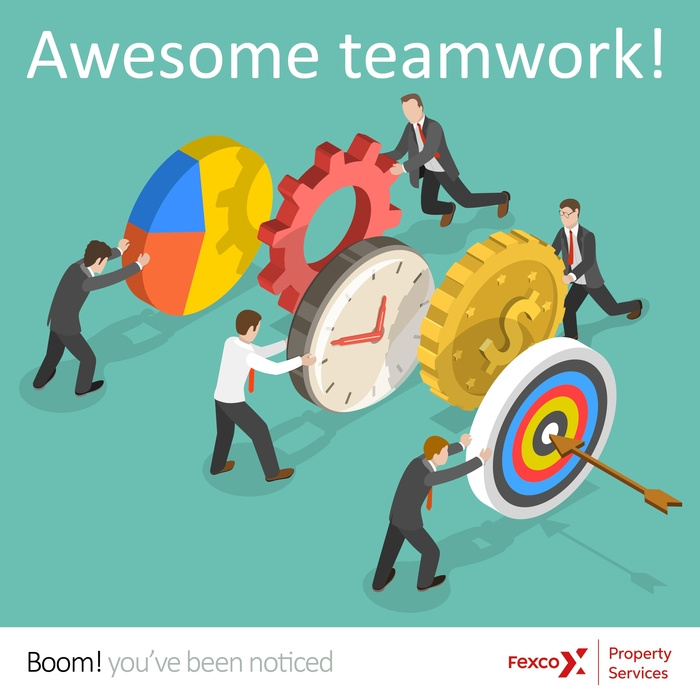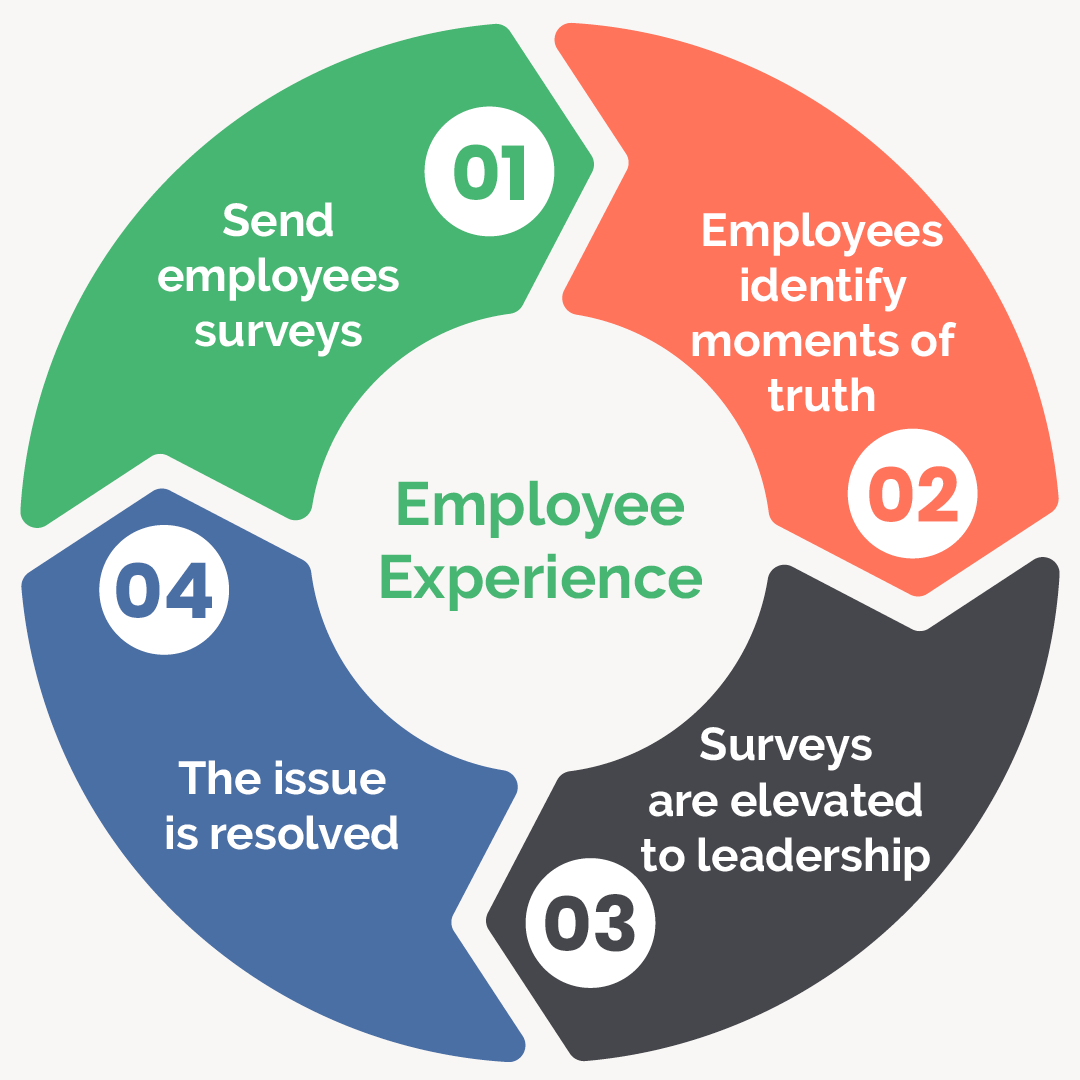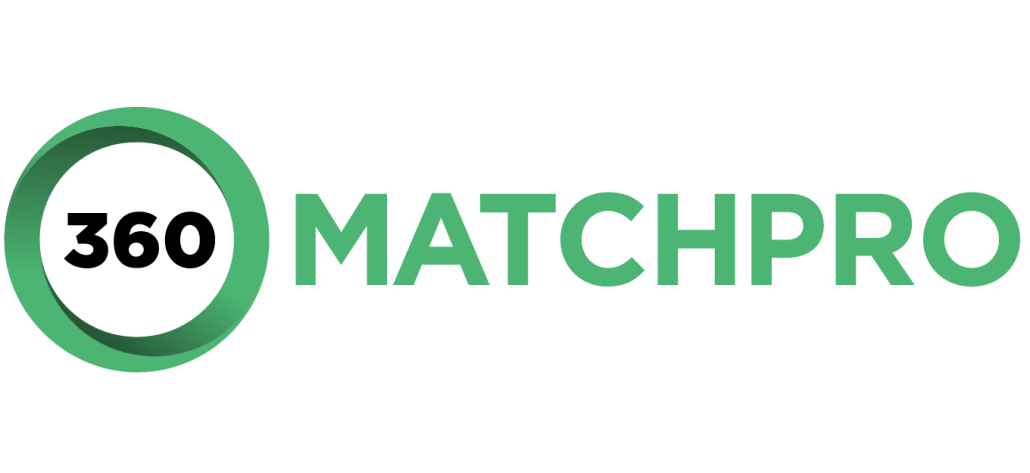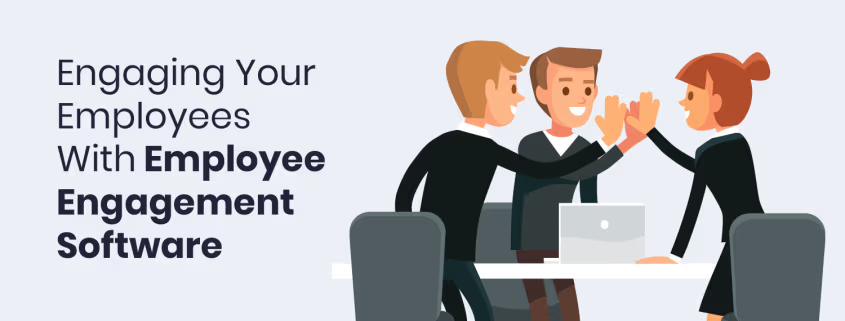Engaging Your Employees With Employee Engagement Software
Technology has revolutionized nearly every aspect of how companies conduct business, including their ability to connect with employees. From appreciation programs to facilitating employee giving, technology makes your business more efficient, organized, and transparent.
However, your work isn’t done after you upgrade to the latest technology. After all, your team needs to adopt each software solution, and it’s your job to convince employees your new system is worth exploring.
To earn employee buy-in for your company’s latest engagement software, this guide will answer essential questions businesses are likely to have, such as:
- What is employee engagement software?
- What are the types of employee engagement software?
- What are the benefits of employee engagement software?
- How can my business increase employee engagement using software?
Having the answers to these questions not only strengthens the foundation of your employee engagement program but also prepares you to answer any questions your employees may have. Let’s get started.
What is employee engagement software?
What is employee engagement software?
Employee engagement software is any digital tool you use to improve employees’ connection, commitment, and overall attitude toward your organization. Employee engagement software includes both:
- Platforms that employees actively interface with, like a matching gift portal
- Tools that your leadership uses to analyze employee behavior and make workplace decisions to improve employees’ day-to-day experience
In this guide, we’ll focus on tools that both employees and employers use to increase workplace engagement. However, note that platforms that focus on productivity and efficiency, like timesheet software solutions, can also be considered employee engagement software since they impact the employee experience.
What are the types of employee engagement software?
Employee engagement software facilitates a wide variety of services, but we’ll focus on optional engagement solutions that employees can choose to use.
A few common types of this employee engagement software include:
Corporate Social Responsibility Software
Corporate social responsibility (CSR) software offers different types of tools that allow companies to host a range of CSR initiatives. CSR programs like matching gifts and volunteer grants require CSR software to function and are common throughout the corporate sector. In fact, over 65% of Fortune 500 companies offer matching gift programs.
CSR solutions help your company organize its employee-backed philanthropic initiatives. Different CSR platforms focus on different types of philanthropy. Thus, your business should find a solution that aligns with your specific employee engagement programs. A few common types of programs CSR software supports include:
- Matching Gifts. Matching gifts are a popular workplace giving program, allowing employees to support the causes they care about by having their employers match their donations dollar-for-dollar. CSR software enables employees to submit their matching gift forms for review easily with matching gift auto-submission. Auto-submission allows employee donors to have their matching gift requests completed for them, boosting participation in matching gift platforms. Look for a CLMA platform, or a Certified Leader in Matching Automation with auto-submission functionality, to access this feature.
- Volunteerism. There are several types of CSR volunteer programs to consider, such as volunteer grants and organized employee volunteer days. Use your CSR platform to gather employee sign-up information to coordinate volunteer efforts or track volunteer grant applications and awards.
- Employee Assistance Fund. Sometimes, the cause employees want to give to is themselves. An employee assistance fund (EAF) is a fund employees can donate to. Then, in financial hardship, they can apply to receive aid. For example, a remote employee might live in an area prone to hurricanes. They could apply for your EAF and receive the financial assistance they need to repair damages to their home and get back on their feet. Your CSR software can provide a donation portal for employees to make gifts to the EAF, allow you to track its funds, and enable you to review aid applications.
If your CSR platform has an employee portal, ensure it is user-friendly with clear directions about the actions they can take. The simpler your system is, the quicker employees will adopt it.
Top CSR Software
There are a wide range of reputable CSR platforms that all offer businesses core features related to employee giving and volunteering. Currently, three of the largest CSR vendors are:

- Benevity. Benevity tailors its corporate giving tools to foster employee engagement. For instance, its gamification features allow companies to launch giving challenges and award employees who rise to the occasion, while its employee resource group features allows employees to come together over their shared desire to give back.
- YourCause. YourCause is a Blackbaud product that provides employee donors with giving and volunteering opportunities. Additionally, YourCause has extensive reporting tools, allowing businesses’ leadership to track their impact.
- Bonterra. Bonterra, formerly CyberGrants, provides software for both companies and nonprofits, meaning they are intimately familiar with how charitable organizations operate. To help companies make strategic philanthropic decisions, Bonterra customers can access its extensive database of reputable nonprofits.
In addition to these companies, a few other worthwhile CSR platforms to explore include:

- Selflessly. Selflessly is a user-friendly, all-in-one CSR platform. Selflessly is particularly notable for streamlining the matching gift process by offering matching gift auto-submission features, making it a CLM-certified platform.
- Millie. Millie aims to make employee giving fun with tools like Giving Madness which organizes employees’ favorite nonprofits into a bracket and lets them vote on which organizations will receive the most funding. Additionally, Millie offers auto-submission tools and is CLM-certified.
- POINT. POINT is a volunteer management platform for both nonprofits and corporations. It focuses on connecting nonprofits and corporations by sharing volunteer opportunities with companies to encourage employee volunteering. Plus, for every company that purchases a subscription, POINT gives a subscription to a nonprofit for free. POINT also provides matching gift auto-submission capabilities and is CLM-certified.
- America’s Charities. America’s Charities aims to help businesses increase employee engagement by enabling them to launch a range of CSR initiatives, including matching gifts, employee volunteerism, EAFs, and scholarship funds.
- Bright Funds. Bright Funds by WizeHive facilitates matching donations, volunteer programs, and grant management. If you ever have challenges with your platform, Bright Funds’ support team is lauded for being timely and helpful.
- Givinga. CLMA-certified platform, Givinga streamlines the charitable giving process for businesses. The platform eliminates hidden fees associated with charitable giving, provides users with a network of vetted charities, and prioritizes donor safety.
- Uncommon Giving. Companies looking for a lightweight, intuitive CSR platform can turn to Uncommon Giving for their donation and volunteer programs. Plus, Uncommon Giving stands out for making donor-advised funds accessible to everyone. Currently, an integration between Uncommon Giving and Double the Donation is in the works to maximize users’ matching gift potential.
- Field Day. Field Day is in the process of becoming a CLMA-certified CSR solution and currently helps businesses engage employees through charitable giving with its all-in-one impact platform.
When reviewing CSR platforms, assess which features each solution specializes in and how that aligns with your needs. For example, if your primary focus is connecting employees with trusted nonprofits, you might select a platform with an extensive nonprofit database, like Bonterra. In contrast, if your goal is to make employee giving as easy as possible, choose a platform with auto-submission technology, like Selflessly.
Appreciation Software
Showing appreciation is one of the easiest ways to engage your employees. Software can help you systemize your appreciation efforts to be consistent and more impactful.
When it comes to appreciation software, consider if you need a platform that facilitates just leadership-to-employee appreciation or peer-to-peer recognition as well. Here’s a breakdown of the differences between these two approaches:

- Leadership-to-employee recognition is when managers, supervisors, and other senior staff members acknowledge their direct reports’ good work. This type of appreciation tends to be more formal, and employees may expect the number of times they were recognized to be part of their performance review, even if not explicitly stated.
- Peer-to-peer recognition allows any staff member to show appreciation for anyone else. This system feels less formal, but it also allows for more appreciation overall as your leadership team can only observe so much of your employees’ work on a day-to-day basis.
Certain technology, like eCards, allows you to get the benefits of both methods. eCards allow you to send over quick messages of appreciation whenever you notice an employee going the extra mile. You can also use eCards for peer-to-peer recognition. Be sure to set up your system so leadership is notified whenever an eCard is sent to keep your senior staff in the loop.
Top Appreciation Software
When it comes to eCard software, we recommend the platform our very own team at Double the Donation uses: eCardWidget.
eCardWidget allows businesses to recognize their employees with customizable, memorable eCards. A few of eCardWidget’s top features include:
- User-friendly design tools. eCardWidget’s design tools are highly intuitive, allowing businesses of all sizes to create custom eCards. Use eCardWidget’s library of templates and graphic design elements or upload your own custom designs. Check out this example of an employee appreciation eCard from Fexco that calls out employees who embody specific company values like teamwork:

- Peer-to-peer recognition options. eCardWidget facilitates both peer-to-peer and leadership-to-employee recognition. Employees can send eCards to their co-workers, shouting out accomplishments that leadership might not always notice. Plus, eCardWidget gives employers the option to always loop leadership into sent eCards, allowing you to get a better understanding of your team’s day-to-day triumphs.
- Customer appreciation. eCardWidget is a highly flexible tool, and businesses can leverage it to show appreciation to customers and employees alike. Alongside your employee appreciation efforts, create customer recognition eCards that promote your products and thank customers for their purchases.
If you’re looking to expand your employee recognition strategy, eCards offer multiple benefits, and our team at Double the Donation can vouch for eCardWidget’s impact. Here are a few quotes from our team’s experiences with eCardWidget:
It might sound like an exaggeration, but the eCards and Bravo Board system really give a bird’s eye perspective of the whole team. I get to see what the sales team is doing, what’s happening in customer success, the amazing stuff the product development team has made. Even on my own team, it’s great making sure everyone gets recognized, and it really brings us together.
Julia Beltran, Partnerships Manager
Everyone being able to shout out the great work they see others doing really emphasizes that we are a team. It can be easy to get competitive when it comes to sales, and seeing all the ways everyone has contributed shows how we rely on each other and are all working toward the same goal. At Double the Donation, we have a value of supporting high performers and creating a culture where they feel empowered to do their best work, and our peer-to-peer recognition program helps us do just that.
Sydney Faye Williams, Manager of Sales
Employee Experience Software
You may be familiar with the term “customer experience,” which refers to all interactions customers have with your organization and their overall impression of your business. Positive customer experience also involves following up with customers when an issue arises to alleviate their concerns, retain the customer, and improve your business practices for future customers.
You can similarly retain your employees by implementing employee experience practices backed by software. Employee experience software essentially consists of survey tools and backend analytics that allow you to assess responses.
With this simple platform, you can implement an employee experience program that identifies and follows up with employee concerns, known as a closed-loop feedback system. This system looks something like this:

- Send regular experience surveys. Routinely survey your employees to identify what is going well with their work and which parts of their work process cause frustration. Be sure to vary which employees you survey to avoid overwhelming any one team member with multiple surveys on top of their usual workload.
- Employees identify “moments of truth.” The frustrations your employees identify are called “moments of truth.” In customer experience, moments of truth determine whether the customer continues interacting with your business or abandons their journey altogether. For employees, the majority will continue working through a moment of truth, but it causes similar emotions that result in customer loss, such as frustration.
- Surveys are elevated to leadership. After submitting a survey, your employee experience software sends the survey to employees’ supervisors. If there are no concerns, the supervisor can rest assured they are helping create a positive experience for their directs. If there is an issue, they can act on it or forward the survey to someone else at the business who can.
- The issue is resolved. Many businesses survey their employees but often fail to complete the feedback loop by taking action and reporting back. If the problem has an immediate solution, implement it and let the employee know. If the solution is not immediately clear, still let them know you have heard their concerns and the problem is on your radar.
Acknowledging employee experiences and taking steps to resolve issues helps employees feel heard. That way, you can reap the benefits of engaged employees. Plus, experience software is an easy way to find missteps in your workflow that may be limiting productivity.
Businesses can run employee engagement programs without underlying software. For example, you might organize an office volunteer day by having employees add their names to a spreadsheet or conduct your matching gift program by providing a PDF employees can download and email back when completed.
However, low-tech strategies rarely scale well, and businesses without dedicated employee engagement software miss out on several worthwhile benefits, such as:
- Improved organization. Software systemizes your engagement programs, making them more structured, routine, and consistent. For example, you’re far more likely to host regular corporate volunteer days if you have a calendar system dedicated to their planning.
- Accurate reporting. Are employees actually engaging with your engagement program? Software lets you collect data on employee attendance, money raised, hours volunteered, employee satisfaction, and any other metric you might be interested in collecting. For example, your CSR software’s information about total matched donations helps promote your program to employees and can be used as a marketing tool to show customers your philanthropic impact.
- Better communication. At large organizations and especially businesses with multiple branches, communicating the details of your engagement program can quickly become challenging. The right platform will let you automate reminder and follow-up messages, reducing wait times and letting employees participate in engagement times at their discretion.
The benefits your software provides become benefits of your engagement program. In other words, software that improves transparency means you now have a transparent employee engagement program. The more benefits you can bring employees, the more valuable your engagement programs are and the easier you can pitch them as part of your employee compensation packages.
Top Employee Experience Software
Qualtrics is the leading name in employee experience software for good reason.
Often, businesses that implement employee experience programs will survey employees but don’t make proper use of their data. Qualtrics directly combats this issue with AI-powered analysis tools that automatically assess employees’ responses and provide recommendations based on trends.
A few of Qualtrics’ top features include:
- Surveys. Employee experience requires surveys, but Qualtrics ensures their customers won’t suffer from survey fatigue. With random sampling tools, Qualtrics collects feedback from different employees without seeming overbearing.
- Reporting. Qualtircs specializes in intensive data analysis. Get insights that quantify complex, qualitative feedback by identifying key topic issues and employee sentiments. Businesses can then look at full data reports or get quick overviews to find the information they need.
- Communication. Employee experience is all about communication, and Qualtrics lets businesses take a streamlined approach through its Manager Assist tool. Using this feature, employees can anonymously submit ideas, share feedback, and pose questions in one centralized location, providing an open dialogue.
Additionally, Qualtrics partners with other employee experience solutions. If Qualtrics specifically doesn’t meet your needs, check out their wide range of partners to find vendors that do.
How can my business increase employee engagement using software?
Starting an engagement program is just the first step in connecting with your employees. After all, despite the prevalence of matching gift programs, 78% of donors don’t know if their employer offers one.
Make sure your employees know about your engagement programs by using your software to:
1. Host a Walkthrough
If you implement software your employees will interface with, walk them through how to use it. Create a recorded demo yourself or download training resources from your platform’s provider if available. Then, invite employees to submit questions so you can address any common points of confusion.
Ensure you document your walkthrough so that when future employees join your business, you can easily train them to use your employee engagement platform.
Additionally, make sure to choose a platform with active technical support. Then, if you encounter an issue, you can quickly contact someone to resolve it. Buggy systems are a fast way to lose employee buy-in, but a responsive technical support team can help alleviate concerns.
2. Gather Employee Input
Once your engagement program is up and running, invite employees to share their feedback. This might be done through surveys (anonymous or identified) or ad hoc as employees interact with it at their own pace.
To get useful feedback, try asking specific questions related to various parts of your engagement program, such as:
- How did you first learn about the engagement program?
- Was the program easy to understand and engage with?
- Is the program software intuitive?
- Do you feel the program has an impact on company culture? If so, what is it?
- Do you plan to continue engaging with the program?
Before requesting feedback, have a goal in mind. Consider what you want the reaction to your engagement program to be. Then, when you roll it out, compare whether the responses align with your expectations.
3. Showcase Leadership Participation
Set an example for your employees by participating in engagement programs yourself. For instance, employees will likely feel more connected to an employer who volunteers alongside them during volunteer days, matches donations to the EAF fund, and sends appreciation messages to employees.
Additionally, participating in your employee engagement program provides an on-the-ground perspective of how your engagement activities and software are functioning. While employee feedback is useful, firsthand experience of the program is an efficient way to put that feedback into context.
Plus, letting employees know that managers, senior team members, and leadership plan to participate in various engagement activities can help market the programs. Employees interested in building stronger bonds with their co-workers or demonstrating their commitment to the business may be more eager to join in on engagement activities if they know their efforts will be seen.
4. Select a Few Employee Leaders
Outside of leadership, ask a few specific employees to lead the charge with engagement programs. This might involve formally appointing mentors who attend engagement events alongside new employees as part of their welcome to your business. Or, you could take a looser approach and request employees who naturally command respect or have many friends in the office to participate publicly, which will likely make others follow suit.
5. Share Program Results
Your software should provide reporting features, and this data can be shared with your employees to encourage participation. Promote your engagement program by sharing the total number of hours volunteered, how much your business has donated to charity, and the number of appreciation eCards you’ve sent to team members.
Sharing program results incentivizes employees to get involved by demonstrating that your programs are actively making a difference in the workplace and greater community. Plus, regularly sharing stories is an effective way to continually remind employees about your engagement programs, keeping participation steady.
Employee Engagement Software: Final Thoughts
Employees are more engaged when they work at companies that are committed to creating a positive work environment, appreciating their staff, and making a positive difference in the world. However you decide to engage your employees, consider how a specific software platform can support your efforts and improve the transparency and effectiveness of your engagement program.
To continue your research on the wide world of employee engagement best practices, explore these resources:
- Developing a Matching Gift Program: A How-To Guide. Ready to take the next step and launch a matching gift program? Get an in-depth overview of what goes into developing a matching gift program.
- The Workplace Giving Guide for Corporate Changemakers. Corporate philanthropy is about making a positive impact in addition to engaging employees. Discover how you can strategically focus your efforts to make a difference in your community.
- Small Businesses With Big Matching Gifts: Examples + Tips. Companies of all sizes can start matching gift programs, including mom-and-pop shops. Learn how to make your small CSR budget go further with these tips.



